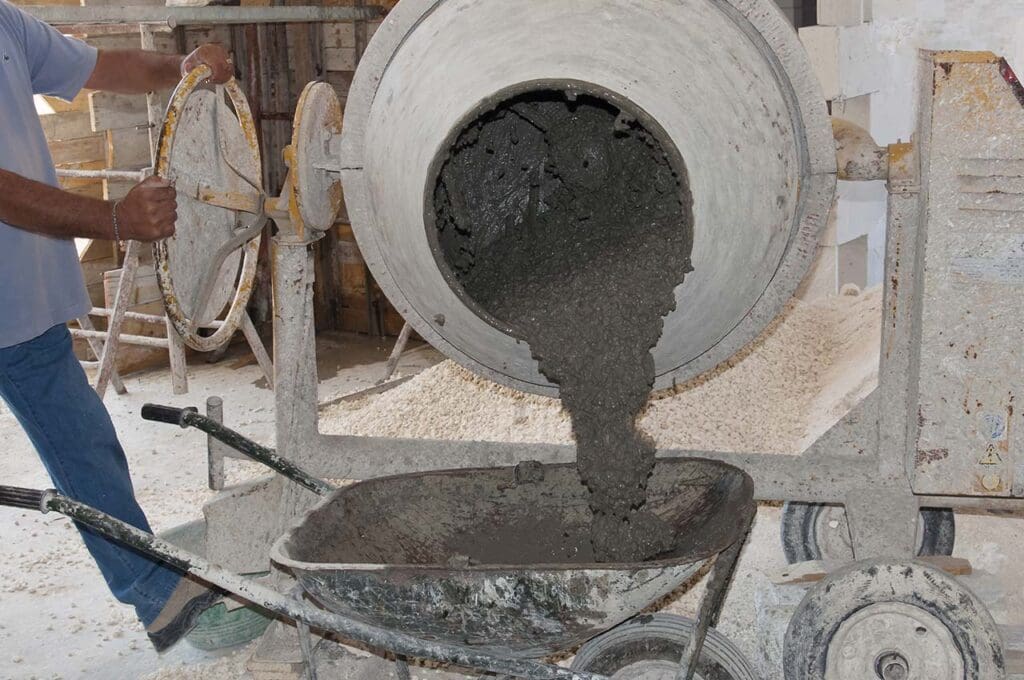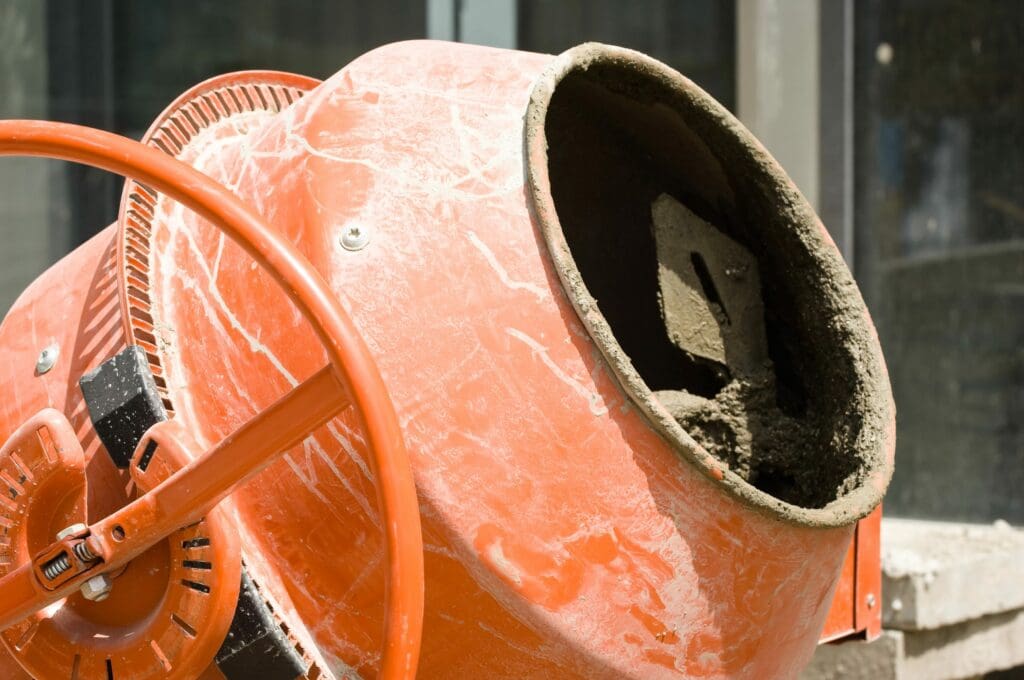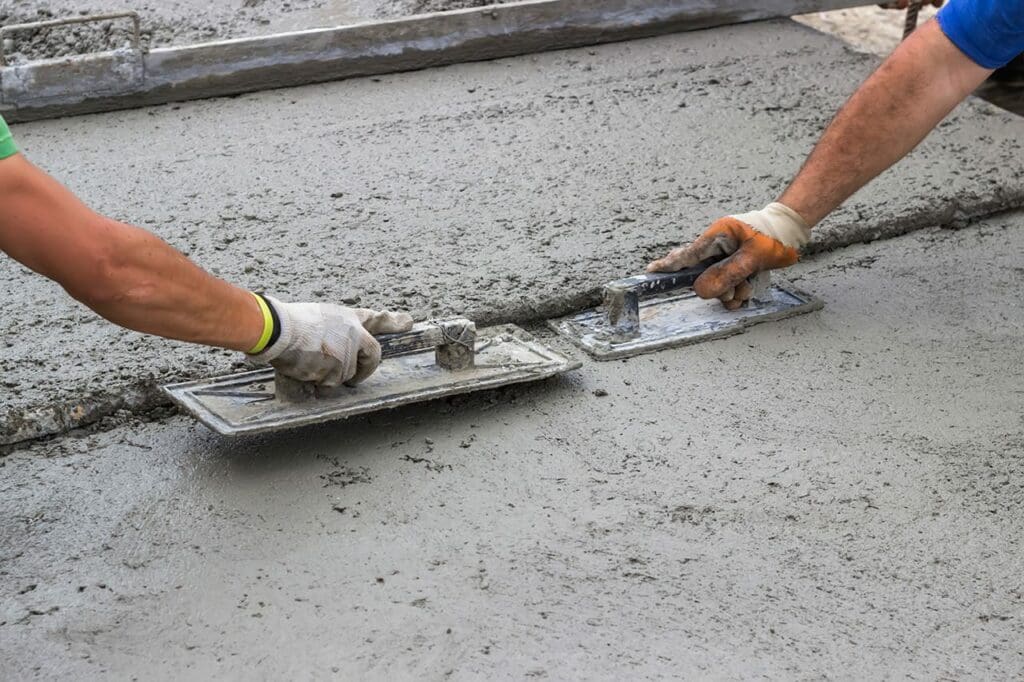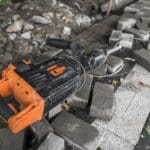Have you ever wondered how to mix cement in a mixer? Whether you’re a DIY enthusiast or a professional, understanding the process is crucial for any construction project. Cement mixers are versatile tools that can streamline the concrete mixing process, making it essential to know how to utilize them effectively.
It’s important to prepare thoroughly when taking on a concrete mixing project. This includes choosing the right cement mixer for your needs and gathering all the necessary tools and materials. With a well-prepared approach, you can ensure a smoother and more efficient mixing process.
In this article, we will provide a comprehensive guide on how to mix cement in a mixer. From understanding the cement mixer to mastering mixing techniques and finishing the project, we’ll cover everything you need to know to achieve professional results.
Understanding How Cement Mixers Work

Cement mixers, sometimes called concrete mixers, are indispensable for various construction projects to achieve a consistent and high-quality concrete mix. These handy tools are crucial when laying floors, casting pillars, or constructing walls. They efficiently combine cement, sand, and stone into concrete, with cement as a vital adhesive.
You can consider cement mixer hire to aid the process when embarking on larger projects. Ensuring that the cement mixer stands on level ground is fundamental to safety and proper operation; an improperly placed mixer can result in uneven mixes or even accidents.
After usage, maintaining the mixer is a vital step. Cleaning the drum with sand, aggregates, and plenty of water will safeguard the mixer from potential damage and extend its lifespan. For effective mixing, start by positioning the drum at a 45-degree angle, then follow a measured approach when adding water to attain a workable consistency of concrete.
An 80-pound bag of cement can create a suitable batch of concrete, and while mixing may seem labour-intensive, the correct technique mitigates weak spots, resulting in a stronger concrete fit for its purpose. Always remember that safety comes first, so wearing a dust mask during the process is advisable to avoid inhaling fine particles.
Preparing for the Project
Before initiating any concrete project, thorough preparation is crucial for efficiency and ensuring the final product’s quality. The initial step involves gathering the appropriate materials in the correct proportions. You will need cement, sand, stone (or aggregate), and water. These are the fundamental components for creating concrete. To maintain the integrity and quality of the cement, ensure cement bags are stored appropriately—away from moisture and water to prevent contamination. Covering them with plastic is an effective precaution to keep them dry.
In addition to assembling materials, preparing your equipment is essential. For projects that utilize a fuel-powered cement mixer, verify that you have adequate fuel. Having ready access to fuel during the project will prevent unnecessary interruptions.
Once all materials are ready, precisely measure them to abide by the desired mix ratio. This ratio is critical as it determines the strength and durability of the concrete. A common mix ratio for general-purpose concrete is 1 part cement, two parts sand, and three parts aggregate, with the amount of water varying depending on the desired workability.
Also of importance is to ensure the concrete mixer is placed on a robust, level surface. This facilitates safety and convenience, providing ample space to manoeuvre and access all materials needed for the task. Preparing your mixing area by clearing debris and ensuring a stable ground for the cement mixer will pave the way for a smoother operation.
Choosing the Right Cement Mixer

When selecting a suitable cement mixer for your construction project, there are several types to consider. These include electric mixers, which are quieter and avoid the need for fuel; petrol mixers that offer more power and mobility; and towable mixers, which are ideal for larger job sites where the mixer needs to be moved frequently.
The choice of mixer could be influenced by factors such as the noise level tolerance at the site and the availability of electricity. For instance, electric mixers will need access to a power source, whereas petrol mixers can be used in more remote locations. Moreover, you should also account for the volume of concrete required: larger projects may benefit from mixers with a bigger drum capacity.
It’s worth noting that brands like Belle Mixers, available at outlets such as Brandon Hire Station, are acknowledged for their durability and are widely chosen by professionals around the globe.
Be sure to familiarize yourself with the mixer’s operating and safety instructions before use. Understanding the specific features and controls of the mixer can help optimize the mixing process and enhance safety. Donning the correct safety gear, including dust masks, gloves, and eye protection, is also mandatory to mitigate the risk of injury.
Gathering Necessary Tools and Materials
Assembling the right tools is as important as choosing the right cement mixer. Aside from the mixer, have a stiff brush handy for cleaning the machine post-use. Other useful tools include buckets for measuring and transporting water and mixed concrete, a wooden board for collecting dry concrete mix before it’s placed into the mixer, and a shovel to load the drum or help dislodge any wet concrete stuck to the sides afterwards.
Ensure plenty of water is accessible; buckets can help you add precise amounts as needed. Having an extra bucket of cement on hand can also be helpful to adjust the consistency if required.
Lastly, remember to assemble all safety gear for personal protection. A dust mask is vital for preventing dust inhalation, while durable gloves protect your hands when mixing and handling the potentially caustic wet concrete.
Once you’ve gathered your tools and materials, you’ll be well-prepared to start mixing concrete confidently, knowing that quality and safety have been duly considered.
Mixing the Concrete
Mixing concrete effectively is a task that benefits significantly from using a cement mixer, even on small-scale projects. The consistent rotation provided by a mixer ensures all the concrete ingredients combine smoothly, yielding a superior finish compared to hand mixing. Choosing a mini concrete mixer hire is often adequate for household or minor tasks, saving time and labour.
When mixing concrete, it’s essential to have the balance of the correct ingredients ready. This preparation consists of measured amounts of water, cement, sand, gravel, or stone. Following the prescribed quantities is pivotal for achieving the desired strength and durability of the finished concrete. These proportions can differ depending on the project’s needs, with more cement content for harder concrete and a lower amount for less critical applications like a base layer.
Remember that the approximate material coverage per cement bag is detailed on the packaging, making estimating the number of bags your specific project will require easier. A standard 40-pound bag of dry concrete mix, on average, yields around 0.30 cubic feet of concrete. However, for extensive undertakings, such as constructing driveways or large patios, sourcing your concrete from a professional ready-mix supplier is more practical than relying on individually mixed bags.
Measuring the Right Amounts of Concrete
Measurement precision is key when preparing to mix concrete. Begin by determining the required quantity of each component – cement, sand, gravel or aggregate. The amount necessary will vary based on the intended use of the concrete, with ratios fluctuating for different finishes and strengths. Bagged mixes offer an array of weights, typically ranging from small 40-pound bags to larger 80-pound options.
The mixture ratio for concrete generally follows a standard guideline: 1 part cement to 2 parts sand to 3 parts gravel or stone. However, tailor these ratios to cater to the project at hand. Higher cement content results in harder concrete, whereas a lower cement proportion would suffice for rougher tasks.
Achieving the Workable Consistency
The ideal texture of mixed concrete resembles that of thick oatmeal. It should be able to maintain its shape when squeezed with a gloved hand. The trick to achieving this workable consistency is the precise addition of water and consistent mixing. The rule of thumb is that less water creates a stronger final product, so restraint is crucial. Adding as little as one extra quart of water per 80-pound bag can diminish the concrete’s strength by up to 40%.
Standard mixing entails a process lasting 3-5 minutes, ensuring the mixture achieves uniformity and appropriate consistency. Keep a close eye during mixing, cautiously adding small amounts of water if necessary, but remember that the less water used, the more substantial the concrete will be.
Adding Water to the Mixer
Adding the correct quantity of water to the concrete mix is a key step in the process. Before including the dry materials, pour approximately one gallon of water into the mixer. This helps prevent the mix from adhering to the drum’s sides. Be sure to consult the mix instructions for the exact water amount corresponding to the number of cement bags you work with.
When adding water, do so gradually. Start with the recommended measure, allowing for a bit of leeway to adjust the consistency as the dry ingredients are mixed. If the concrete appears too thick, sparingly incorporate additional water. Conversely, adding a dry mix can help correct the overly wet consistency if the mixture is too thin.
For those opting to enrich the colour of their concrete with liquid cement colouring, this should be introduced to the mixing water before introducing the dry components. This ensures the colour is distributed evenly throughout the batch.
Always maintain a strict water measure, as incorrect amounts can weaken the concrete or make the mix difficult to manage. With these steps, you’ll be positioned to mix a batch of concrete that exhibits the required workability and strength for your construction project.
Table: Standard Ratios and Coverage for Bagged Concrete Mix
| Bag Weight (kg) | Volume Yield (m³) | Recommended Use (estimated) |
|---|---|---|
| 25 | 0.0117 | Medium household projects |
| 20 | 0.0094 | Small to medium projects, repairs |
| 12.5 | 0.0059 | Very small projects, patching |
Mixing Time: 3-5 minutes for uniform consistency
Water Quantity: As per mix instructions, adjust carefully for workability
Mixing Techniques

Machine mixing typically serves as the preferred method for larger concrete projects, given that it expedites the process and simplifies the mixing compared to manual labour. The Belle Mixers, globally recognized for their sturdiness and dependability, are frequently the top pick for construction endeavours. When mixing concrete, it’s imperative to use a consistent ratio of the composite ingredients: cement, sand, and stone. A competent mixer effectively merges these components, yielding a homogenized and superior-quality mixture.
Hand mixing may suffice for a smaller-scale construction project, but it is generally more labour-intensive and time-consuming. Mixing by hand can also introduce inconsistencies, leading to weak spots and a compromised structure. In contrast, a cement mixer delivers more reliable and durable concrete thanks to its thorough and uniform mixing capability.
When undertaking any concrete mixing task, be it manual or machine-assisted, the proper techniques are essential for ensuring the desired outcome.
Mixing Techniques
Using the Cement Mixer to Mix Concrete
Mixing concrete with a cement mixer involves a few simple steps that, when executed correctly, can produce the ideal consistency for your construction needs. Place the cement mixer on a sturdy and level surface to prevent wobbling or toppling during operation. Positioning the cement mixer at a 45-degree angle is optimal, as it encourages thorough mixing without spillage.
Before initiating the mixing process, have all the necessary materials, including water, cement, sand, stone, and fuel, for the mixer if it operates on it. The precise preparation of these materials will streamline the process and ensure that you can maintain consistency throughout batches. For example, if you’re using an 80-pound bag of cement mix, follow the mix instructions carefully regarding water addition, as excess water can dramatically reduce the strength of concrete.
To mix concrete using a Belle Mixer or other reliable brand, follow these steps:
- Power up the cement mixer to ensure it’s functioning properly.
- Add half the required amount of builder’s mix and cement into the mixer.
- Add water gradually; begin with a baseline amount and adjust as needed to reach the right consistency.
- Activate the mixer by pressing the ‘on’ button.
- Add the remaining builder’s mix, cement, and water in increments, continually monitoring the mix’s consistency.
- Allow the mixer until the concrete achieves a smooth, even composition.
After you’ve attained a good mix, the concrete is ready to be used for your project.
Tips for Effective Mixing
Here are some tips to ensure efficient and safe use of a cement mixer for your concrete mixing needs:
- Confirm that the mixer is positioned on firm, flat ground to maintain stability during operation.
- Always direct the mixer drum upwards at a 45-degree angle before loading the materials to promote optimal mixing and prevent spillage.
- Begin by putting in half the proposed amount of materials and incrementally adding water to control the mixture’s fluidity.
- After mixing, thoroughly clean the mixer drum by churning sand, aggregates, and water inside it. This will help avoid any residue building and prolong the shelf life of the mixer.
- It is crucial to never insert a shovel or other tools into the rotating mixer drum, as this poses a serious risk of injury or damage.
By adhering to these tips and practices, you can ensure a safer and more productive cement mixing process, achieving perfectly mixed concrete for your construction project.
Finishing the Project
Once the concrete has reached a workable consistency in the cement mixer, it’s time to transition toward finishing the construction project. Begin by discontinuing the mixer and preparing the area where the concrete will be poured.
Pouring and Leveling the Concrete
Carefully pour the mixed concrete into the designated area. It’s advisable to work in manageable sections, pouring and smoothing one before continuing to the next. Utilise tools like a shovel or rake to distribute the concrete, ensuring it spreads across the area evenly.
After distributing the concrete, a screed is employed to smooth and level the surface. A straight wooden board or a specialized screed tool can be dragged across the top in a sawing motion, distributing the concrete in a uniform layer.
Be mindful to avoid overworking the concrete, and refrain from re-pouring once it begins to set, as this can result in cracks and weak spots in the finished product.
To facilitate proper curing, cover the area with a plastic sheet or damp burlap. This will maintain the necessary moisture levels, preventing the concrete from drying too quickly and promoting a stronger result.
Cleaning and Maintaining the Cement Mixer
Post-mixing cleanup is a critical step in preserving your cement mixer. After a job or when the mixer will not be used for periods of thirty minutes or more, commence cleaning immediately.
Position the mixer on solid, level ground. Angle the drum upwards at 45 degrees, and power the machine on, running it with a mix of sand, gravel, and water to loosen any residue. After approximately five minutes, empty out the cleaning solution.
For a thorough interior cleanse, employ a stiff brush to scrub away any stubborn mortar or concrete remnants. A pressure washer or hose can be utilized for wiping down external parts and tools, ensuring that the wash is directed away from vital components.
Remember to responsibly dispose of wastewater and debris, adhering to local environmental regulations. With these measures in place, your cement mixer will remain ready and reliable for successive batches, proving invaluable for a range of construction applications.




